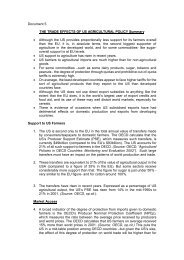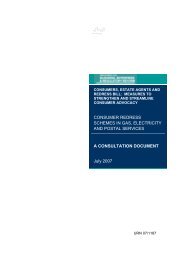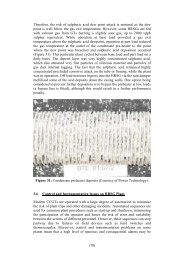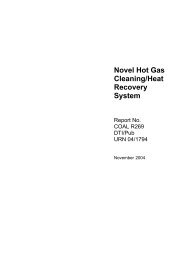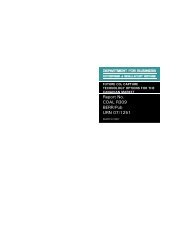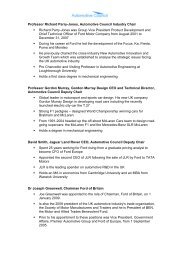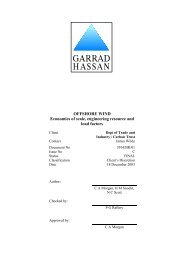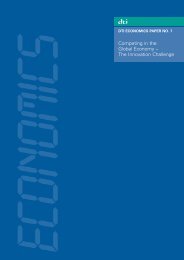Coal Fired Power Plant Operations - DTI Home Page
Coal Fired Power Plant Operations - DTI Home Page
Coal Fired Power Plant Operations - DTI Home Page
You also want an ePaper? Increase the reach of your titles
YUMPU automatically turns print PDFs into web optimized ePapers that Google loves.
9.1 Implementation of the unit optimiser<br />
17 PT/03/BD1076/R Revision 2<br />
There are many common functional requirements for plant optimisers regardless of<br />
detailed differences. This suggests using an object orientated programming paradigm.<br />
With this approach an object is a specific piece of code whereas a class is a more general<br />
template which can be tailored to specific requirements. The concept of inheritance is used<br />
in this context, an object can inherit functionality from another object or class. This<br />
functionality has two forms known as properties and methods. Properties are values of<br />
parameters of the code whereas methods are actual functions belonging to the object.<br />
Access to the object’s internal values are via methods, thus providing a clear boundary<br />
between the objects functionality and the implementation of this functionality. Object<br />
orientated methodology has another feature which is very useful for implementing the<br />
optimiser simulations, namely function overloading. This allows methods to be defined at<br />
the class level but the method implementation to be changed when an object is defined<br />
from the class. Different objects can inherit from the same class to carry out different<br />
detailed processing with the same named method. Thus an object’s RUN method could<br />
calculate a different formula for different object yet the calling syntax is the same.<br />
There are a number of programming languages that support object orientated programming<br />
but the one chosen for this project is the proprietary product MATLAB. This allows rapid<br />
prototyping of mathematical constructs and has a number of specialist toolboxes which<br />
enhance its capabilities in different specialist areas. One such toolbox is the optimisation<br />
toolbox which provides a sequential quadratic optimiser package. The object orientated<br />
aspects of MATLAB are limited compared to other languages but are sufficient to allow<br />
the concept to be exploited for this project. One of the advantages of MATLAB is that it<br />
uses a workspace where variables, including objects, exist, and can be interrogated at will.<br />
This is particularly useful for testing the different objects, as they are stand alone entities<br />
whose methods can be tested independently.<br />
A general class optimiser was defined. This is the template or base class for all the plant<br />
optimiser objects.<br />
This base class has the constructor OPTIMISER which sets up the following fields :<br />
opt.input=[ ] this field is for the inputs to the function. These inputs will<br />
contain both controllable and independent variables.<br />
opt.output=[ ] this field is for the output.<br />
opt.inputlimits=[ ] these fields contain the upper and lower bounds on the<br />
controllable inputs.<br />
opt.inputtypes=[ ] this field contains the input type, whether control or not, c or<br />
nc.



